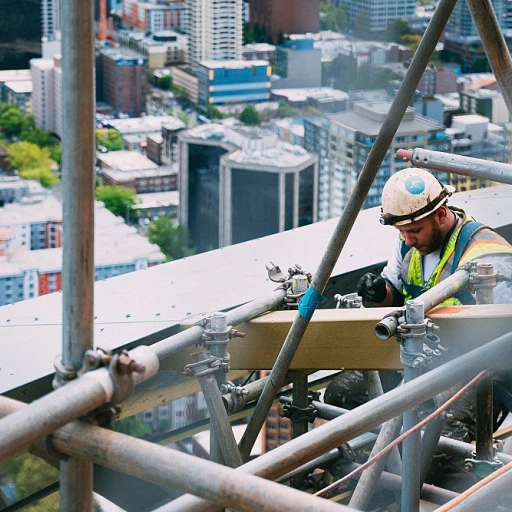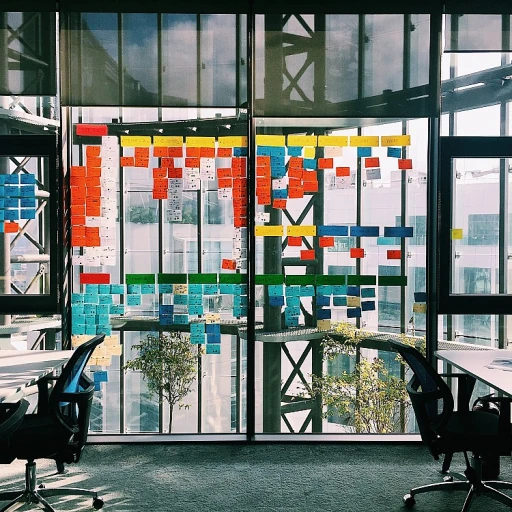
Understanding Cultural Nuances
Recognizing the Importance of Cultural Awareness
Understanding cultural nuances is crucial for navigating the complex dynamics of office life within Indian companies. The fusion of diverse cultures and traditions creates a unique work environment, which can significantly affect employee productivity and collaboration. Although the values embedded in traditional practices still permeate many aspects of the professional setting, there's an increasing alignment with modernity that encourages a more inclusive and adaptable workspace. This adjustment is often reflected in hybrid working models and remote work opportunities, enabling employees to maintain a more flexible work-life balance. The office space in Indian companies often mirrors the hierarchical nature of society, with communication and decision-making processes deeply influenced by respect for seniority. However, open communication and innovative approaches are gaining importance, which aids in creating a more collaborative atmosphere. Workers in such environments must be sensitive to cultural norms, whether they are in a work office setting or remote working, allowing for smoother transitions and interactions between team members. Furthermore, the adoption of modern practices doesn't entirely overshadow traditional values—rather, they coexist, paving a way for seamless integration of old and new practices. As organizations continue to evolve, prioritizing cultural sensitivity not only enhances employee cooperation and productivity but also facilitates a pleasant and effective work environment. For more insights on how Indian companies are enhancing efficiency with these dynamics, explore the overview of office improvements in Indian companies.Balancing Tradition and Modernity
Embracing Tradition in a Modern Office Environment
Understanding how Indian companies balance tradition and modernity is key to thriving in the workplace. In many Indian offices, incorporating cultural heritage into the modern workspace is often seen as essential. This intersection creates a unique balance that influences daily operations. Navigating the dynamics of an office often means appreciating long-standing customs while embracing new working methodologies. Here are some key aspects influencing this balance:- Dress Code and Formality: Traditional attire is sometimes favored, especially during festivals or important meetings. Yet, there is an increasing acceptance of more casual wear, reflecting a shift towards modernization.
- Office Spaces: The design often incorporates aspects of Indian culture, such as geometrical patterns or traditional motifs, providing a familiar yet contemporary working environment. This mix allows employees to feel connected to their roots while working in a space that supports innovation and productivity.
- Celebrations and Rituals: Festivities are celebrated within the office, offering a break from routine while reinforcing team spirit and cultural identity. These events can foster a lively atmosphere and enhance personal connections among employees.
- Flexibility Versus Structure: Many Indian companies are now allowing employees the flexibility of remote or hybrid work, moving away from the traditional full-time office presence. This flexibility caters to the evolving needs of today’s workforce, balancing traditional office working with the demands of modern life balance.
Communication Styles and Hierarchies
Mastering Diverse Communication Approaches
In any office, communication is paramount, setting the tone for productivity, relationship-building, and overall workflow. Indian companies experience unique challenges due to their intricate blend of regional languages, inter-generational interactions, and the dynamics of remote and hybrid working models. One vital aspect is understanding communication styles in the Indian workplace. Here, emphasis is often placed on respect for authority and maintaining harmony within teams. Hierarchies are typically observed, with senior employees often expected to lead conversations, especially in formal gatherings. However, this is gradually evolving as younger team members and remote workers infuse modern communication methods and collaborative tools into everyday interactions. Furthermore, the shift towards hybrid and remote work has had a significant impact on corporate communications. The traditional face-to-face meetings are now increasingly replaced by digital platforms, demanding adaptability from all employees. Effective communication in such a diverse workplace often involves balancing personal touch with digital fluency. For more insights on how to enhance internal communication in such settings, check out this comprehensive guide. Language also plays a critical role. While English is predominantly used in official communications, many employees feel more comfortable conversing in regional languages during informal or personal interactions. This mix can create a vibrant, albeit complex, professional environment. To navigate these communication styles successfully, companies need to foster an inclusive environment, accommodating varied communication methods without hindering productivity. Emphasizing flexibility and open communication channels can lead to better understanding across teams and ultimately drive the company's success in a multicultural workspace.Work-Life Balance Challenges
Work and Home: Striking the Right Balance
In Indian companies, finding a work-life balance can often feel like walking a tightrope. Employees work hard, often juggling multiple responsibilities both in office and at home. The traditional expectation has been full-time commitment within office walls. However, there have been significant shifts recently, influenced by hybrid work models and options to work remotely.
The challenges of maintaining work-life balance are not just about time management; they are deeply rooted in shared cultural understandings. Work tends to be a core focus, with productivity often linked to the time spent at the workplace. Yet, there is a growing recognition of the need for personal space and flexible working hours. Companies are allowing employees to manage their days to promote better life balance.
Remote workers particularly face challenges in delineating professional and personal life. The absence of a physical boundary between home and office can blur time boundaries and affect productivity. To combat this, companies are encouraging strategies to create a structured routine that accommodates both work and life commitments.
Flexibility is the cornerstone of modern work-life balance. Employees greatly value the ability to choose remote working days, aligning their schedules to accommodate personal obligations. This liberty not only boosts morale but also enhances the overall work environment, allowing for a more engaging and committed workforce.
More Indian companies are adopting flexible hours, offering hybrid working arrangements and fostering a supportive office environment that respects individual needs. The goal is to nurture a culture that understands the delicate act of balancing work pressure with personal life, ultimately leading to a happier and more productive work space for all.
Technology Integration in the Workplace
Integrating Digital Tools and Resources
In the current era, integrating technology in the Indian workplace plays a crucial role in streamlining processes and enhancing productivity. With the advent of digital tools, companies are exploring new ways to create efficient and agile work environments. Adopting effective work strategies involves balancing between in-office and remote work setups. This hybrid work model promotes not only flexibility for employees but also optimizes the use of office space. The evolution of such working models showcases how Indian companies are embracing modernity while maintaining traditional values. Remote workers benefit from technology by enabling seamless connection with team members and ensuring continuity in work processes. Employees working in various environments can access essential company resources and maintain a consistent workflow, regardless of their physical location. As companies embrace digital transformation, the effective use of tools that support hybrid working is fundamental for employee efficiency and satisfaction. Flexible working arrangements, which allow employees to either return to the office or work remotely depending on their preference, have become more prominent. The result is a more balanced work life, where personal space is respected, and productivity thrives. Developing a robust digital infrastructure further supports the creation of an environment that meets the dynamic needs of today's workers. Time management is another essential element enhanced by technology, as digital tools can help in planning workdays more efficiently. Employees can allocate time effectively for tasks, making hybrid working models sustainable in the long run. The integration of new systems also delivers significant benefits, including reducing labor costs by improving overall efficiency and engagement.Fostering a Collaborative Environment
Building a Team-Oriented Workplace Atmosphere
Creating a collaborative atmosphere in an Indian company involves understanding the interplay between tradition and modernity, integrating both to cultivate a harmonious work environment. It’s not just about streamlining tasks but also about fostering a sense of unity among employees while respecting cultural nuances. Adapting to various work modes—be it remote, hybrid, or full-time office—requires a space where employees feel valued and motivated. To achieve this, consider the following strategies:- Encourage Open Communication: Establish clear communication channels that allow employees to express themselves freely, balancing traditional hierarchical structures with modern-day transparency.
- Promote Flexibility: Allowing employees to choose between remote work and office working reinforces a flexible work culture. Flexibility can lead to improved productivity and life balance as workers tailor their work life to their personal needs.
- Adapt Office Spaces: Design the office environment to support collaborative efforts. Spaces that support teamwork can invigorate workers to become more engaged, whether they are collaborating in-person or through remote work platforms.
- Foster Team Building: Regular team-building activities and workshops can enhance relationships among colleagues and break down silos. This can significantly improve team dynamics and the company culture.
- Leverage Technology: Modern technology tools enable collaboration beyond physical constraints. Using the right platforms empowers remote workers to stay connected, thus retaining a sense of inclusivity regardless of their physical location.













